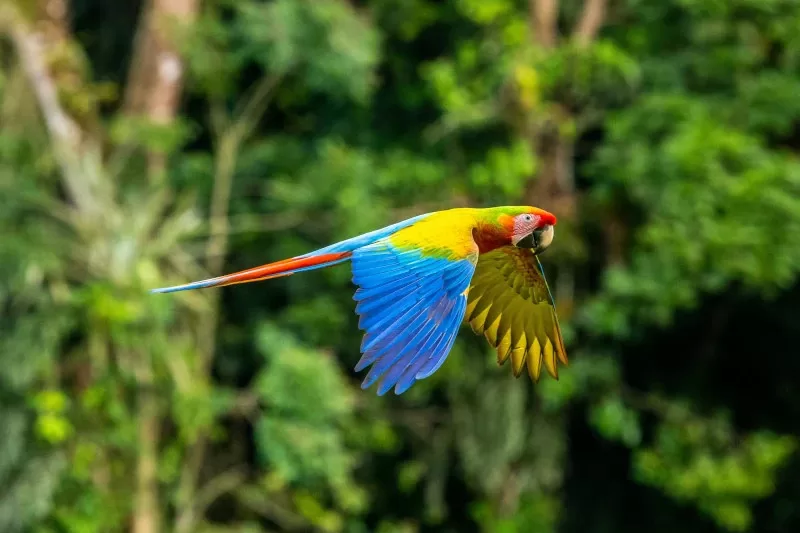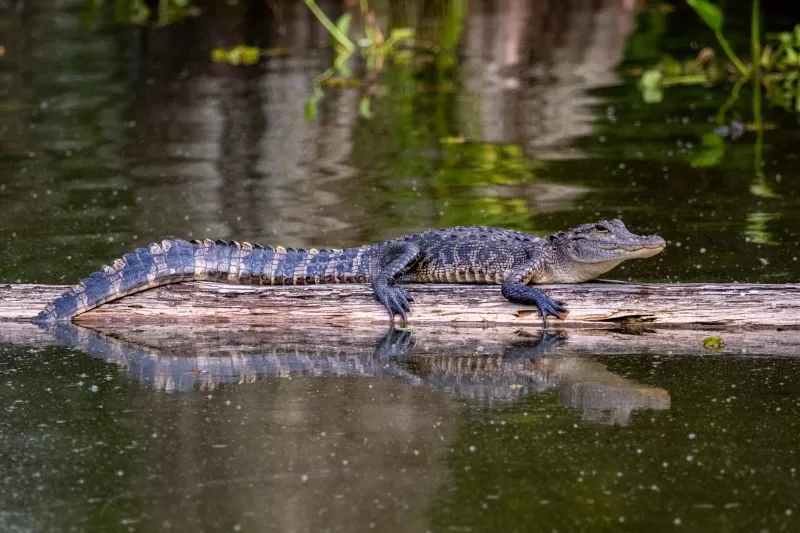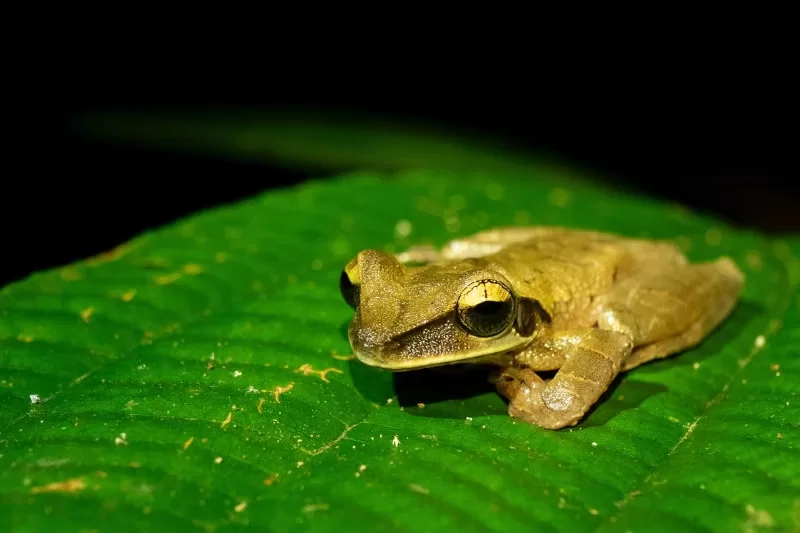Peru, a country known for its rich historical heritage, is also home to an extraordinary spectrum of biodiversity. This bio-cultural treasure chest is showcased brilliantly in Manu National Park Peru, a place where Mother Nature truly bares her soul. Recognized by UNESCO as a Biosphere Reserve and a World Heritage site, Manu is one of the most diverse national parks on our planet, presenting a vivid window into Peru’s biodiversity.
Situated in the heart of the Peruvian Amazon, Manu National Park Peru extends over nearly two million acres, ranging from high Andean mountains down to lush rainforest plains. This breathtaking landscape, a veritable life factory, boasts a rich mosaic of habitats and species, many of which are found nowhere else on Earth. Here, jaguars and pumas roam alongside rare spectacled bears, while macaws and toucans paint the sky with a riot of colors.
Manu National Park is a marvel of diverse landscapes. It stretches from Andean peaks to Amazonian plains. This region showcases a range of habitats, each with unique species. Nestled in the Peruvian rainforest, Manu boasts a plethora of landscapes.
The park is sectioned into three main areas. One of these is the Manu Reserved Zone. This zone encapsulates some of the park’s most pristine habitats. Here, the biodiversity is abundant and ever-astonishing.
The Andean region of Manu reaches up to 4,200 meters in altitude. Here, towering mountains loom over deep valleys. The high-altitude puna grasslands host herds of graceful vicuñas. These creatures, relatives of the llama, are a stunning sight.
Descending from the mountains, one encounters the cloud forests. These forests are draped in mist for a large part of the year. Their enigmatic, moisture-laden ecosystem is home to rare spectacled bears and colorful quetzals.
Further down, the terrain transitions into lowland rainforests. This part of Manu is a biodiversity hotspot. It contains some of the highest concentrations of animal species worldwide. The humid, steamy conditions favor a spectacular variety of life.
One can’t help but marvel at the Amazonian plains, a sea of green. These plains house a plethora of amphibians, insects, and diverse plant life. This landscape provides a habitat for jaguars, anacondas, and countless bird species.
From towering peaks to lush plains, Manu’s landscapes are a spectacle. This diversity of habitats is key to its biodiversity. Manu, indeed, is a microcosm of our planet’s natural wealth.

Manu National Park’s biodiversity is stunning. Within its borders, life thrives in abundant diversity. It’s a thriving hotspot, housing thousands of unique species. The wildlife of Manu is a fascinating tapestry of life.
The Manu Rainforest is one such biodiversity wonderland. Its lush canopy teems with life. It hosts a spectacular array of plant and animal species. Some are rare, others are endemic, found nowhere else.
Within the forest, primates are a sight to behold. Thirteen species, including spider monkeys and howler monkeys, abound. Each species plays an essential role in maintaining the forest’s health.
The avian life is just as impressive. Manu is home to over 1,000 bird species. This includes the vibrant macaws and elusive harpy eagles. Their melodic calls add to the rainforest’s symphony of sounds.
Reptiles and amphibians, too, have a strong presence. Poison dart frogs, with their vibrant colors, are among the numerous amphibian species. Snakes, lizards, and turtles are also part of Manu’s herpetofauna.
In the water, the Amazonian manatee and black caiman reside. They inhabit the park’s rivers, creating a dynamic aquatic ecosystem. On land, jaguars and spectacled bears represent the mammalian diversity.
Insects, often overlooked, are innumerable. They form a crucial part of Manu’s wildlife tapestry. The park’s butterflies are especially notable for their varied patterns and colors.
This rich biodiversity is a testament to Manu’s ecological health. It’s a living, breathing manifestation of the Earth’s biological richness. Manu National Park truly is a wildlife haven of epic proportions.

Manu National Park is a crucial asset in global conservation. Its rich biodiversity makes it indispensable. Yet, it’s not just about the numbers of species. The role of Manu goes beyond that.
Firstly, Manu acts as a crucial carbon sink. The vast forest absorbs significant amounts of carbon dioxide. This helps in mitigating the effects of climate change.
Secondly, the park safeguards a large amount of freshwater. Its rivers feed into the Amazon Basin. This makes Manu critical for regional water security. Furthermore, the park is a living laboratory. It allows scientists to study ecosystems. This research informs conservation strategies worldwide.
Manu also protects indigenous communities. These communities have lived in harmony with nature for centuries. Their traditional knowledge is a rich resource for sustainable living practices.
Yet, Manu is under threat. Deforestation, illegal mining, and poaching are major concerns. Global conservation efforts need to address these challenges. Support for Manu translates into support for global conservation. This can come in many forms, including tourism. Responsible tourism provides financial resources for park maintenance.
There’s no better way to understand Manu than to experience it. Take a Manu Jungle Tour, for instance. You’ll encounter the park’s incredible biodiversity firsthand.
Or consider a Cusco to Manu National Park Tour. You can witness the transition from Andean peaks to Amazonian plains. Such experiences create lasting impressions and inspire conservation action.
Manu National Park plays an essential role in preserving our planet’s health. Supporting it is an investment in our future. Consider visiting and experiencing the wonder that is Manu.

If you got any questions, please do not hesitate to send us a message. We reply within 24 hours!
+51 900 394 399
info@biomanuexpeditions.com
reservas@biomanuexpeditions.com
